Alien technology is most likely not the cause of the mysterious dimming of Boyajian's starlight. But it is difficult to find alternative explanations
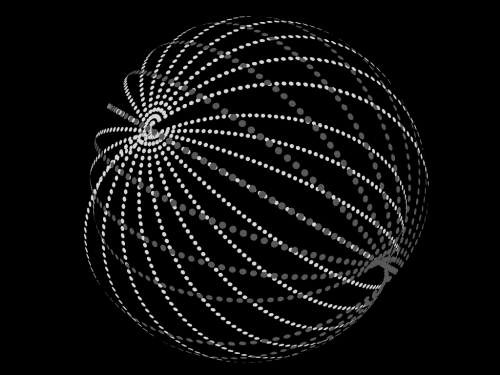
- KIC 8462852, also known as Boyajian's Star, is a mysterious object discovered more than 1,000 light-years away by the Kepler space telescope, which searches for extrasolar planets.
- The star troubles astronomers with its dramatic and irregular dimming, which is difficult to explain using a known natural phenomenon.
- Disks of gas and dust, remnants of destroyed bodies, swarms of comets, and even black holes, are among the exotic explanations offered by theorists.
- Apart from these scenarios stands the sensational possibility that the strange behavior of Boyajian's star is the result of the activity of an advanced cosmic culture.
In the fall of 2014, when the trees began to change their color from green to gold, a researcher visited us at the Department of Astronomy at the University of Pennsylvania Tabitha Boyajian. She came in a quiet afternoon to tell about an extraordinary discovery. The landscape that was about to change was the background for the meeting that also changed the course of our careers.
During the period after the completion of her doctoral thesis, during which she stayed in Vyajian as a researcher at Yale University, she detected unexplained changes in the light intensity of one of the stars she was following Kepler space telescope of NASA, designed to locate planets outside our solar system. These changes looked nothing like the changes normally observed when a planet passes between the star and the telescope. Boyajian also ruled out other possible causes, including physical malfunctions in the space telescope, and looked for new ideas. one of us (Right) proposed a very unusual idea: maybe the cause of these changes is alien technology?
In the 60s of the 20th century, the physicist raised Freeman Dyson the possibility that advanced and energy-hungry civilizations will surround their home planet with solar collectors, which will later be given the nickname "Dyson books", to absorb as much as possible of the star's light energy. Could this dimming star be the first evidence that cosmic civilizations are more than science fiction? This extraordinary hypothesis was a last resort, but for now we could not rule it out.
The star that puzzled Boyajian so much that the official nickname that stuck to him is "Boyajian's star” but unofficially named “Tabby's Star”, attracted the attention of astronomers and laymen alike. As with all great enigmas, countless solutions have been offered to the riddle of this star, but none of them provide a satisfactory explanation for the strange observations. Whatever the cause responsible for them, it lies outside the realm of known astronomical phenomena.
A surprise among Kepler's data
The Kepler space telescope began operating in 2009. Before that, most of those who were engaged in the search for extrasolar planets (orbiting other suns), discovered them one by one, working diligently and stubbornly like fishermen who catch fish from the sea one by one. When Kepler came into the picture it was like a fishing boat; He was able to discover thousands of new worlds at once.
For four years the telescope followed and searched for stars in a small area of the Milky Way transitional Planets: events in which a planet passes by its star (that is, between the star and the telescope) and blocks a small part of the star's light visible from Earth. The chart describing the star's brightness over time is called a "light curve". When there are no objects that pass between the star and the telescope, the light curve of a star is close to a straight line, while when a planet passes by it, U-shaped depressions appear in this light curve that repeat themselves regularly, like clockwork, every time the body orbiting the star returns and blocks its light . The duration of these depressions, their timing, and their depth are a source of information about the planet itself. Among other things, you can learn from them about its size and its temperature.
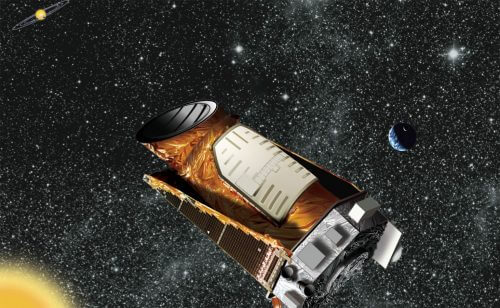
Only one of the more than 150,000 stars surveyed by Kepler, the star KIC 8462852 (the number is its number in the telescope's input catalog), was found to have a light curve that did not fit any explanation. The automatic algorithms used by the professional astronomers involved in the detection of planets failed to distinguish this unusual case. The first to notice it were amateur astronomers participating in the public participation project Planet Hunters. When the volunteers examined the light curve of the star KIC 8462852 obtained from the space telescope, they did see decreases in light intensity similar to the decreases obtained during planetary transits, but these decreases were not regular but seemed random: sometimes they lasted a few hours and sometimes days or weeks. There were cases when the star's light decreased by 20 percent (a typical rate for transits of the largest planets), but in other cases the light intensity decreased by a rate that reached XNUMX%. No imaginable solar system can create such an extreme and highly variable light curve.
The curious amateur scientists reported the discovery to Lavoyajian, who was among the staff members overseeing the project. In 2016, the star and its mysteries were revealed to the wider world in a peer-reviewed article. Its title was Where's the Flux (Boyajian calls KIC 8462852 the initials of this title, WTF, which also happen to be the initials of a rude expression expressing bewilderment).
Strange in many different ways
Beojian's star had more surprises in store. Following Boyajian's article on the star, the astronomer claimed Bradley Schaefer from Louisiana State University, based on archival data, that Boyajian's star's luminosity has decreased by more than 15% over the past hundred years.
This was a controversial claim, because fading over decades seems almost impossible. The brightness of stars remains nearly the same for billions of years after their formation, and they undergo rapid changes only near their death. These "rapid" changes occur over periods on the scale of millions of years (compared to their billions of years of life) and are accompanied by distinct signs that do not appear in Boyajian's star. By every other measurement made, this is a perfectly normal star now in the middle of its life. There is no evidence that it is a variable star that emits energy in regular pulsations. There is also no sign that it is accelerating material from a companion star, no sign of unusual magnetic activity, and no reason to think it is still young and nascent - all phenomena that can cause rapid changes in a star's brightness. The truth is that apart from its unusual dimming, this star looks completely normal.
But Schaefer's claim was put to the test when astronomers Benjamin T. Montet and Joshua D. Simon tested it against Kepler's original, lesser-known calibration data. They found that Boyajian's star's brightness decreased by 3% during Kepler's four years of operation. This is an extraordinary phenomenon no less than the changes that occur in the intensity of its light over the shorter periods of time.
We must now therefore explain two puzzling phenomena associated with Boyajian's star: a slow diminution of its light over four years (and possibly over the last hundred years), and deep and irregular dimmings lasting days or weeks. Astronomers would indeed prefer a single explanation for both, but each of the phenomena is difficult to explain by itself, and the difficulty only increases when you think of both phenomena together.
Many unconvincing answers
We will examine the most popular scenarios that have been proposed as an explanation for the different data from the observations of Boyajian's star, we will judge each of them according to its degree of success in explaining the observed phenomena and we will add our subjective assessment of the probability of each theory being correct.
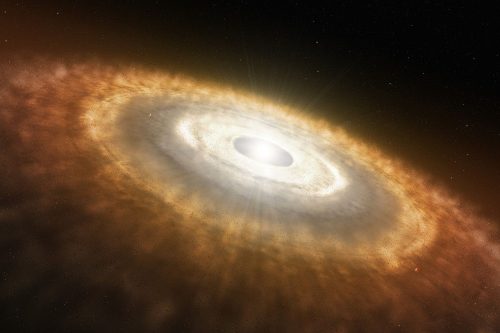
Dust and gas disk - Irregular dips in the light curve and long-term weakenings in light intensity like in Boyajian's star are also observed elsewhere, around very young stars whose planets are still forming. These stars are surrounded by a belt of disks of dust and gas that are heated by the starlight. As this material turns into planets, clumps, rings, and twisted shapes form. Viewed from the edge of these discs, these local differences in material density can dim the star's light for short periods of time, while the oscillations of the material discs around their star can block large amounts of light for decades or even hundreds of years.
But Boyajian's star is now about halfway through its life. He is not young, and apparently there is not a disc of material around him. Such a board, like anything else hot, would radiate heat in the form of additional infrared radiation, but in Boyajian's star no such radiation anomaly is visible. The dust and gas may be in the form of a very thin ring spread far around the star, so that it blocks the star's light along our line of sight without creating much excess infrared radiation. But such rings have never been observed around a mid-life star like Boyajian's star. Therefore, since this scenario can only explain the phenomena observed in it with the help of a phenomenon that has never been observed before, we estimate that it is very improbable.
A swarm of comets - Boyajian's original hypothesis was that swarms of giant comets passing close to the star were the cause of its dimming. Comets are found most of the time far from their star and move in very tense (eccentric) orbits, which can explain why the dimming of the light is irregular. But what about the lack of heat? Comets must heat up as they pass near Boyajian's star, and lose heat quickly as they move away. In such a case, excess infrared radiation would be detected only during dimming. Now we don't find any excess infrared radiation, and its absence would make sense if the comets that caused dimming a few years ago are now cold, far away from the star, and not emitting any detectable heat. But even in that case, if a swarm of comets is capable of causing these prolonged dimmings, it must be very large, and would necessarily create excess infrared radiation, and as mentioned, there is no such radiation.
Therefore, in our opinion, the cometary explanation is a plausible explanation for the short-term dimming, but not for the long-term dimming. However, it is believed that if comets are not the cause of the long-term dimming, they are also not the cause of the short-term changes in the star's light intensity.
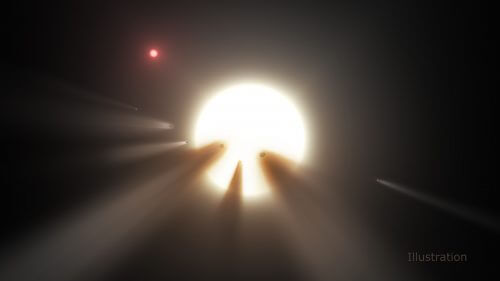
A cloud in the interstellar medium or in the solar system - Gas and dust are scattered in interstellar space that block some of the starlight. Perhaps a cloud or dense sheet of such material blocks a small and variable amount of light, and as Kepler orbits the Sun his line of sight passes through different parts of this region. Such a cloud could have density differences that would dim Boyajian's starlight over long periods of time, as well as small regions of denser material that could account for the extreme, short-term dimming.
This hypothesis is supported to some extent by the work of Close up of Valerie from the US Navy Observatory and his colleague Alexei Goldin. The two argue that some of the smaller dimmings attributed to Boyajian's star are actually deep dimmings of the light of fainter stars nearby in Kepler's field of view, dimmings likely caused by swarms of tiny, dense clouds or comets in interstellar space. Our subjective assessment is that this hypothesis is a plausible one.
According to a similar hypothesis, the blocking cloud may be at the edge of our solar system. In that case, Kepler's orbit around the Sun would have caused its line of sight to pass through the cloud every year, but we see no annual cycle in the dimmings of Boyajian's star. More than that, at the moment we have no reason to think that such a cloud exists. It is indeed possible to imagine how such a cloud could form: it could have formed from ice and Mars originating from geysers on the surface of bodies such as Pluto that are further away from our Sun. But as long as this hypothesis has not been thoroughly tested by scientists, we consider it a possible, but improbable, hypothesis.
Changes in the planet itself - The self-luminosity of stars does change when they begin to use up the fuel in their cores. But this process occurs over periods of time on the scale of millions of years, not hundreds of years or days; And it takes place at the end of the star's life, not in the middle of it. Natural phenomena such as spots and flares on the surface of the star, sometimes seen in our Sun, change the brightness of stars over shorter periods. If the erratic, brief brightness changes and dimming over the longer duration can be explained by changes in brightness originating from internal physical processes in Boyajian's star itself, there is no need to include in the theory additional material orbiting the star.
Mohammed Sheikh and his colleagues at the University of Illinois at Urbana-Champaign recently conducted a statistical analysis of the times, depth and location of the short dimmings, and found a distribution that is consistent with a "power law" characteristic of phase transitions (like magnets whose direction changes in the presence of external magnetic fields). They raised the possibility that this distribution in the brightness of Boyajian's star could be a hint that it is on the verge of an internal transition such as the reversal of its magnetic poles.
But no star similar to Boyajian's star has ever seen such activity, and in fact, the star appears too hot for the dynamo phenomenon that generates the magnetic fields in colder stars, such as our Sun, to occur. And the biggest problem is that stellar magnetic fields cannot cause the long-term dimming we see in Boyajian's star.
the astronomer Brian Metzger of Columbia University, along with his colleagues at Columbia University and the University of California, Berkeley, developed a more possible explanation, according to which a planet or brown dwarf collided with Boyajian's star. Such a collision would cause a temporary brightening of the star's light; And if so, the long-term dimming we see could actually be the return of the star to its normal brightness. In this scenario, there is no natural explanation for the irregular, short-lived dimming, or the details of the dimming shape that Montet and Simon saw in the Kepler calibration data, but future research may solve this problem.
For this reason, we attribute a medium probability to the merger scenario, and a very low probability to other explanations based on brightness changes in the star itself.
Black holes - In the wider audience there were those who brought up the idea that Black Black was involved in what was happening. According to an often-heard idea, a black hole with the mass of a star orbiting Boyajian's star could block the star's light. But this hypothesis fails in three respects. First, such a black hole would pull the star Anna and Anna across the sky, and these oscillations could be easily detected. Boyajian's staff looked for such fluctuations and found none. Second, stellar-mass black holes are much smaller than stars, so a single black hole would block only a tiny amount of the star's light. In fact, contrary to intuition, the strong gravitational field of a black hole would not only not block the light of the background star, but would actually increase it. Third, when a black hole swallows gas and dust, the material falling into it heats up so much that it shines with great intensity at all wavelengths. If there was indeed a black hole between us and Boyajian's star, we would expect to see not a weakening but rather a strengthening of the intensity of the light - and that is certainly not what we see. So has the black hole idea been ruled out?
not exactly. There is a possible solution that somewhere between us and Boyajian's star, far out in space, there is a single black hole, around which there is a wide, cold disk of matter - like the rings of Saturn but larger than our entire solar system, and this disk has an almost transparent outer region and an inner region More compressed. Such a disc could be the cause of the long-term dimming of Boyajian's star if it passes through our line of sight across Boyajian's star: first its invisible region, then the denser region. Perhaps such a move has occurred within the last hundred years. In such a case, the irregular dimming of the star could be the result of a shadow cast by the rings, gaps, and other internal structures in the disc passing by the star. Such a black hole (and the disk that may surround it) would not be revealed by Boyajian's efforts to look at the region at high resolution because they themselves would not emit any light.
Since we have no observational evidence at all that there are black holes surrounded by cold, wide discs, this scenario does not sound so convincing, but the theories actually predict such discs as a byproduct of supernova explosions, following which black holes with the mass of stars can be formed. Moreover, according to statistical estimates, such black holes could pass in front of at least one of the 150,000 stars tracked by Kepler during its four years of operation. Our subjective assessment is therefore that this theory has some degree of plausibility.
Giant alien structures - After examining a series of natural explanations for the strange behavior of Boyajian's star, and finding that none of them are without problems, we can now think of the most sensational possibility: giant alien structures like those described by Dyson more than half a century ago.
Imagine that an alien culture has built many panels to collect energy. These plates are made in different sizes and holidays in different orbits around the star. The combined result of the smaller plates in this plate array would be to partially block the light from the star, like a semi-transparent screen.
As denser parts of the array of plates move in and out of our line of sight, we can see changes in brightness for periods ranging from hours to hundreds of years. As first shown by the astronomer Luke Arnold, extremely large plates, or a group of plates that float in some structure, perhaps even larger than the star itself, will cause large and distinct dimmings during their passage between us and the star, depending on their geometric shape.
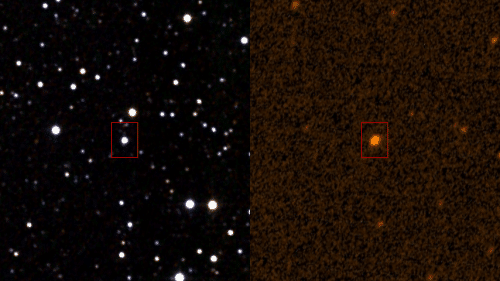
As in the case of the interstellar disk hypothesis, the lack of infrared emission is a problem. Even giant alien structures must obey the basic laws of physics, so any energy from the starlight that reaches them must eventually also be emitted as heat. This requirement is true regardless of how efficient the technology is. Energy cannot simply disappear, so if a lot of energy is collected, in the long run, a lot of energy must also be released.
But there are ways to make this hypothesis realistic: a huge structural array can radiate the energy it collects not as heat but as radio or laser signals; It does not have to be spherical in shape but can also surround the star as a ring whose circumference corresponds exactly to our line of sight; It can use technology that goes beyond our physical understanding that does not emit heat at all. Because of the many unknown components, it is very difficult to test this hypothesis.
If all natural hypotheses are rejected, the hypothesis of the giant alien structure will have to be seriously considered. Another justification for taking it seriously would be if we detect radio signals that are clearly not natural from the vicinity of Boyajian's star. The search for them has already begun. Boyajian looks for such signals with the help of Green Bank Telescope in West Virginia. At this time, we estimate that the plausibility of the most sensational hypothesis to explain the brightness changes of Boyajian's star is unclear: we simply do not know enough even to assign a qualitative probability to the activity of life forms from other worlds.
An unknown but bright future
Where does this leave us in our attempts to understand Boyajian's star?
We can rule out any explanation in which excess energy is expected to be emitted as infrared radiation, because we do not find such radiation. We can also reject scenarios that depend on a multitude of low-probability events or those that rely on unknown laws of physics or on objects the likes of which we have never seen - at least as long as we have not ruled out all other possibilities.
The best way to move forward is to keep finding out the facts. Boyajian, now a professor at Louisiana State University, was able to use the widespread public interest in this planet to garner support for a crowdfunding project that bought us time on the Global Network of Telescopes. Expecting Las Cumbres. We check the state of the star several times a day, and if its light intensity decreases again [as it did start to happen in May 2017 after the article was published], we have several telescopes ready to turn towards it to measure the spectrum of the missing light to discover the composition of the blocking medium.
Other astronomers look to historical measurements of the star's brightness to learn more about its long-term dimming. More information about the duration of this dimming will further constrain the theories trying to explain the star's unusual light curve and help us understand how to look for additional observational clues.
We also await better measurements of the distance of Boyajian's star. This information is expected to come from The spaceship Gaiaof the European Space Agency and is expected to help rule out some of the hypotheses. If the distance of the star is less than 1,300 light years, the influence of gas and dust in the interstellar medium cannot explain the current dimming rate. On the other hand, if the distance is about 1,500 light-years (this is now the best estimate), then the long-term dimming may be due to the random scattering of dust along the line of sight. But if the star is much further away, then its light intensity is much stronger than we thought so far, and if so, its dimming could be a return to normal light intensity after merging with another body, as suggested by Metzger's group.
Unless more information comes from measurements with the Green Bank Telescope, Les Combes Observatory or Magaya, and until such information is in our hands, our speculations about Boyajian's star are limited only by our imagination and our understanding of the laws of physics. As with the best mysteries in nature, the journey towards the truth behind this enigmatic star is still far from over.

4 תגובות
It doesn't really matter if one or another star is found or not.
What is relevant to us is the dust of dead stars that we are made of.
Why is this important?
Because it creates a different system of life for us, not only the one in the land, but also that of heaven.
And our connection to this system, not in our actions but rather through our intentions.
We All One
These are satellites that hide the light.. of course that's obvious
It's amazing that the alien idea is accepted and discussed seriously...
There are no alien devices in 150000 stars, and precisely on one star did the aliens decide to set up an array of flying saucers?
Haven't we drifted around a bit?
There are updates on a weekly basis about this planet. Feel free to search on YouTube, it's quite interesting and seriously made.
Tabby's Star KIC 8462852 Flux Update